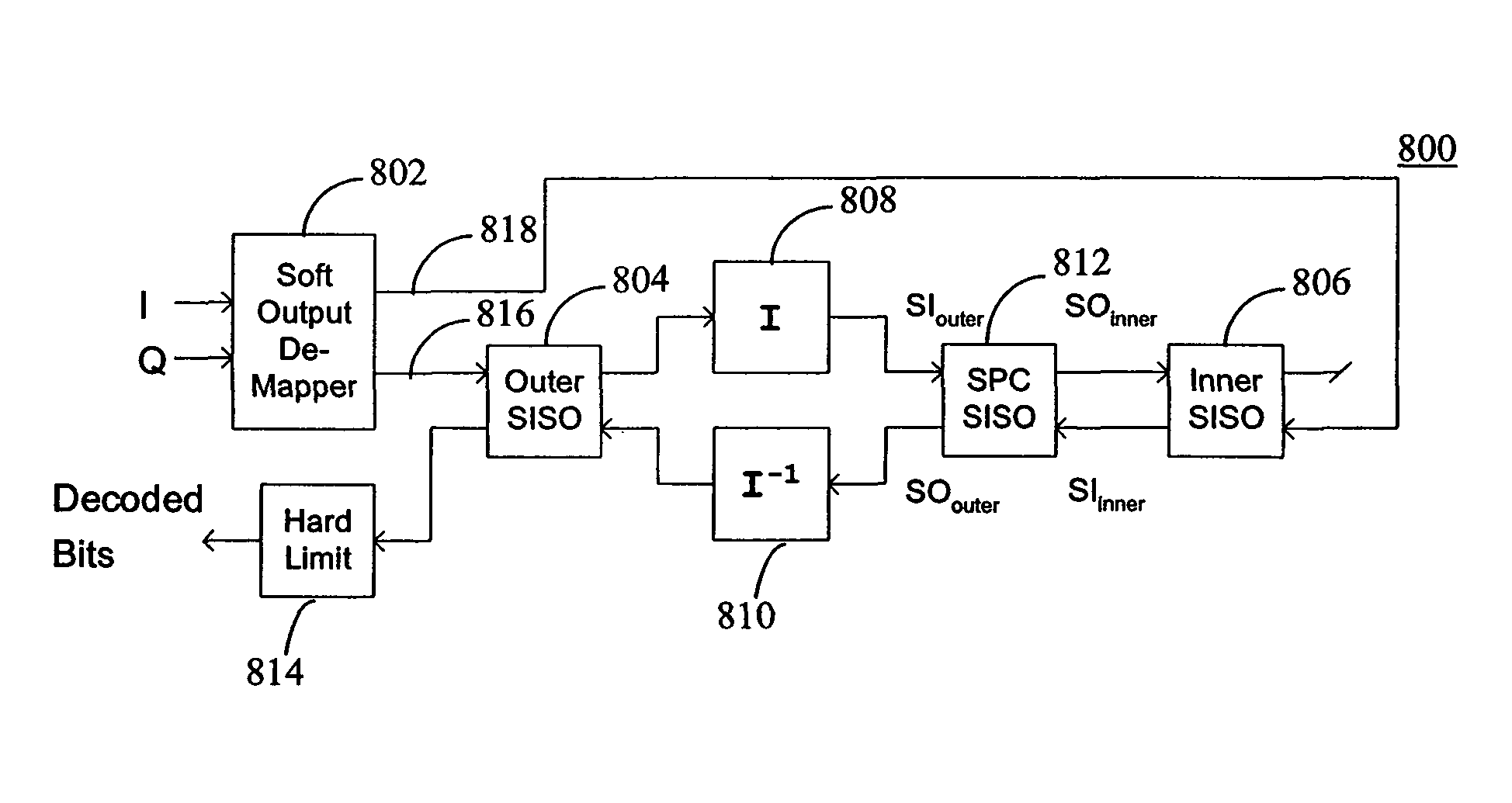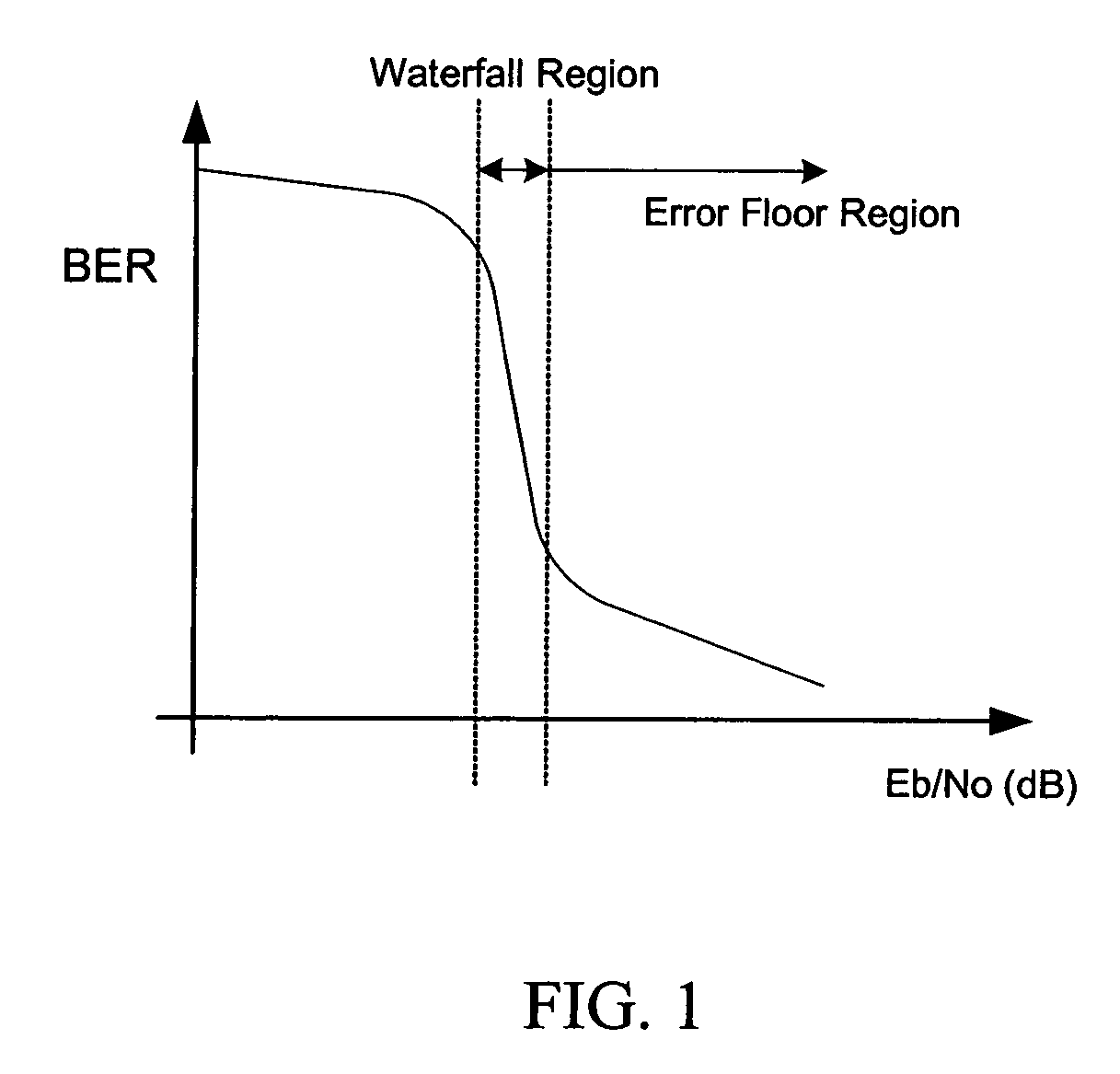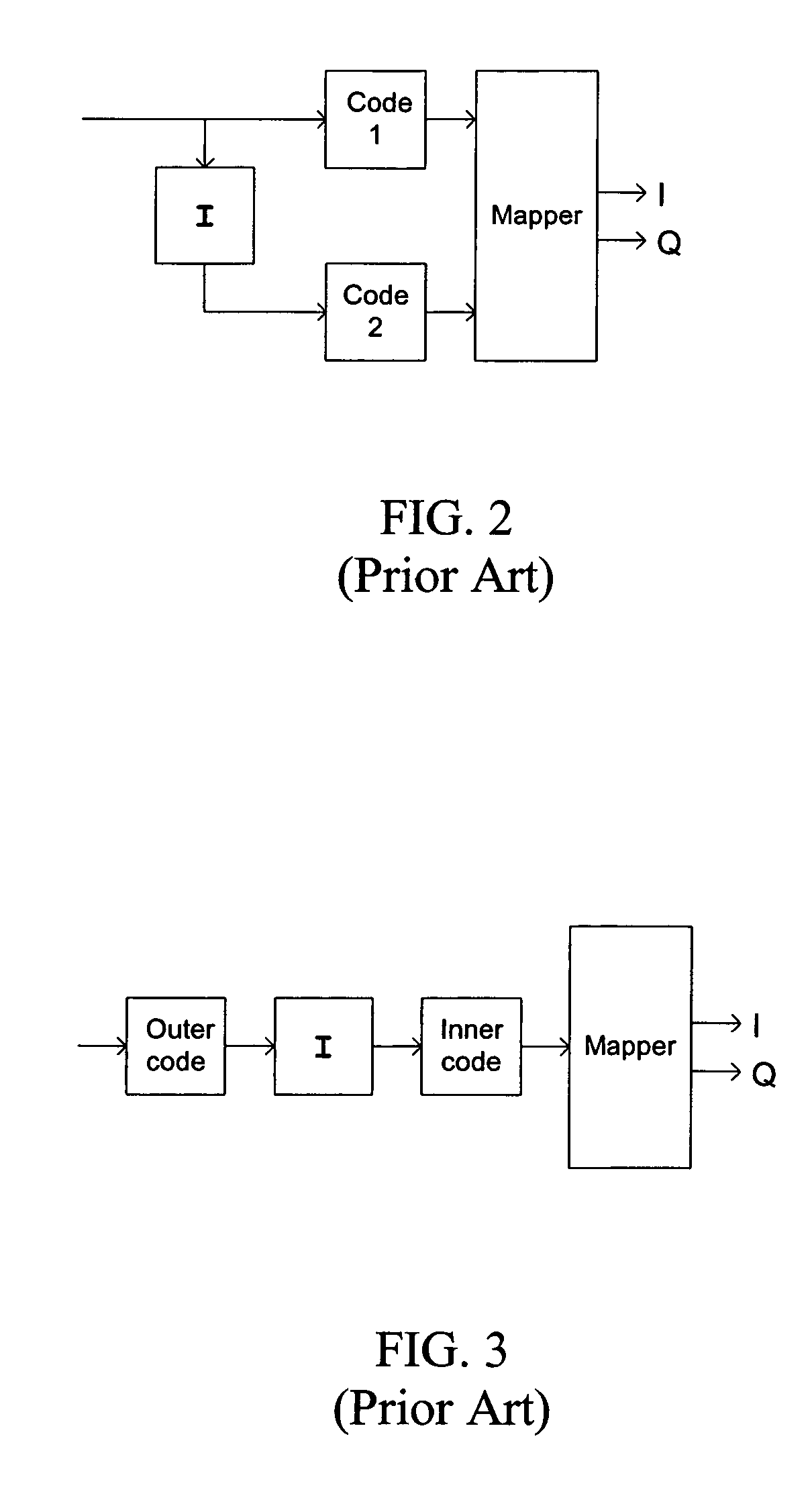Method and apparatus for communications using turbo like codes
a technology of turbo and like codes, applied in the direction of code conversion, code conversion, error correction/detection by combining multiple code structures, etc., can solve the problems of data containing errors, tlcs have an almost flat error floor region, and deteriorate the quality of data transmitted or stored
- Summary
- Abstract
- Description
- Claims
- Application Information
AI Technical Summary
Benefits of technology
Problems solved by technology
Method used
Image
Examples
Embodiment Construction
nstrates the throughput performance of a decoder for the improved error correction coding scheme, according to one embodiment of the present invention.
[0034]FIG. 10 demonstrates the code rate flexibility of a decoder for the improved error correction coding scheme, according to one embodiment of the present invention.
[0035]FIG. 11 demonstrates the frame size flexibility of a decoder for the improved error correction coding scheme, according to one embodiment of the present invention.
[0036]FIG. 12 demonstrates the frame size flexibility, at an extreme code rate, of a decoder for the improved error correction coding scheme, according to one embodiment of the present invention.
[0037]FIG. 13 demonstrates the modulation flexibility of a decoder for the improved error correction coding scheme, according to one embodiment of the present invention.
[0038]FIG. 14 demonstrates the convergence properties of a decoder for the improved error correction coding scheme, according to one embodiment o...
PUM
 Login to View More
Login to View More Abstract
Description
Claims
Application Information
 Login to View More
Login to View More - R&D
- Intellectual Property
- Life Sciences
- Materials
- Tech Scout
- Unparalleled Data Quality
- Higher Quality Content
- 60% Fewer Hallucinations
Browse by: Latest US Patents, China's latest patents, Technical Efficacy Thesaurus, Application Domain, Technology Topic, Popular Technical Reports.
© 2025 PatSnap. All rights reserved.Legal|Privacy policy|Modern Slavery Act Transparency Statement|Sitemap|About US| Contact US: help@patsnap.com



